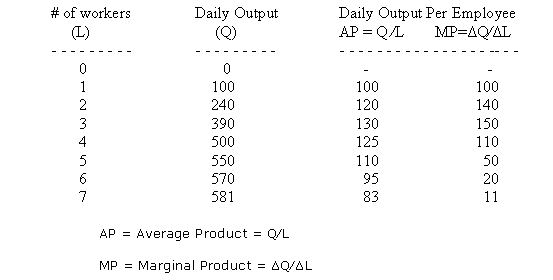Published On:Wednesday, 28 December 2011
Posted by Muhammad Atif Saeed
Modifying Output
The "Short Run"The short run is a time period so short that the firm cannot alter some production factors (typically these factors include the size and/or number of plants, the technology used, equipment and the management organization). Those factors are sometimes referred to collectively as the "plant". The firm usually can increase output in the short run by adding variable inputs. Labor is the most common variable input.
The "Long Run"In the long run, firms have sufficient time to adjust to any and all production factors. Factories can be expanded, shrunk, demolished or built. The firm can leave or enter an industry.
Suppose a car manufacture decides to build a new plant to build SUVs. This would be an example of a decision made in the long run. If that manufacturer decided to expand output by having employees work overtime, then that would be an example of a short-run decision.
The "Long Run"In the long run, firms have sufficient time to adjust to any and all production factors. Factories can be expanded, shrunk, demolished or built. The firm can leave or enter an industry.
Suppose a car manufacture decides to build a new plant to build SUVs. This would be an example of a decision made in the long run. If that manufacturer decided to expand output by having employees work overtime, then that would be an example of a short-run decision.
| Look Out! Differences between the "short run" and the "long run", and the concept of economic profit are critical to understanding economics! |
- Total Product: The total product is the total quantity of goods produced, in association with specified levels of input.
- Marginal Product: The marginal product is the change in output that occurs when one more unit of input (such as a unit of labor) is added.
- Average Product: The average product is the total product divided by the number of input units, usually a variable input such as labor.
Example:
Suppose only one worker was present at an assembly plant and that worker had to do all functions of the plant - order and stock supplies, assemble the good, provide maintenance for the factory, prepare the good for shipping, etc. If a second worker is added, there may be a larger increase in productivity, as the two workers can allocate the tasks according to their abilities, and less time will be lost going to and from various locations in the plant.
A possible schedule of plant output could be as follows:
 |
In this example, hiring the fourth worker increases output by 110 units, which is not as large as the increase created by hiring the third worker.
The cost of all production factors is equal to the firm's total cost (TC). Total fixed costs (TFC) include all fixed costs, while total variable costs (TVC) include the cost of all variable inputs such as labor. Marginal cost is the increase in costs associated with producing additional output. At some point in time, marginal costs will begin to increase because each additional worker contributes less to total output. The average fixed cost (AFC) is the fixed cost per unit of output, while the average variable cost (AVC) specifies the variable cost per unit of output. AFC and AVC combined are equal to the average total cost (ATC). As production increases, average fixed cost (total fixed cost divided by quantity) will decrease. When marginal cost exceeds average total cost, average total costs will go up, at which point the firm must receive higher prices if higher production is to occur.
The table below assumes that the firm has fixed costs of $1,000 per day, each worker is paid $200 per day, and each unit produced has variable material costs of $1 per unit.
 |
From the table above we can see that both average total cost and marginal cost initially decrease as production increase, but both start going up at certain levels of production.









